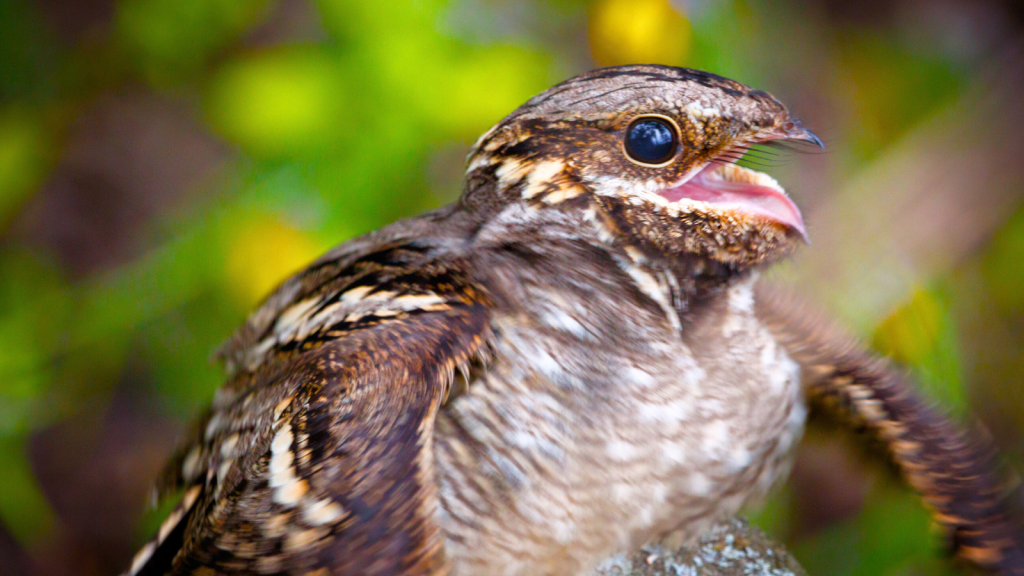As the sun dips below the horizon and darkness settles over British woodlands, a mysterious bird takes flight. The nightjar, with its mottled plumage and silent wings, is a master of camouflage and stealth. These nocturnal wonders have fascinated naturalists for centuries, yet remain largely unknown to many. From their bizarre calls to their incredible aerial acrobatics, nightjars are full of surprises. Get ready to discover some amazing facts about these elusive creatures that haunt our woodland edges and heathlands.
Whisper on the Wind

The nightjar’s call is unlike anything you’ve ever heard. It’s a strange, mechanical churring that can last for several minutes without pause. This eerie sound has earned the bird nicknames like “churr owl” and “eve-jar” in various parts of Britain. The male’s churring can be heard up to a mile away on a still night, making it an effective way to attract mates and mark territory.
Masters of Disguise
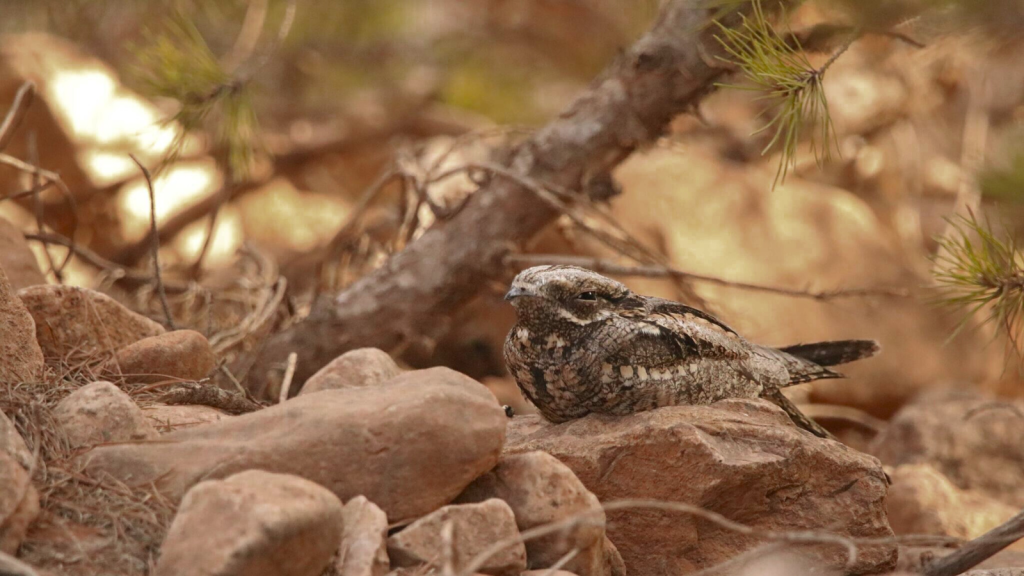
During the day, nightjars rest on the ground or perch lengthwise along tree branches. Their bark-like plumage makes them nearly invisible, blending perfectly with their surroundings. This camouflage is so effective that you could walk right past one without noticing. Their cryptic colouration includes intricate patterns of browns, greys, and blacks, which break up their outline and make them virtually disappear against tree bark or leaf litter.
Wide-Mouthed Wonders
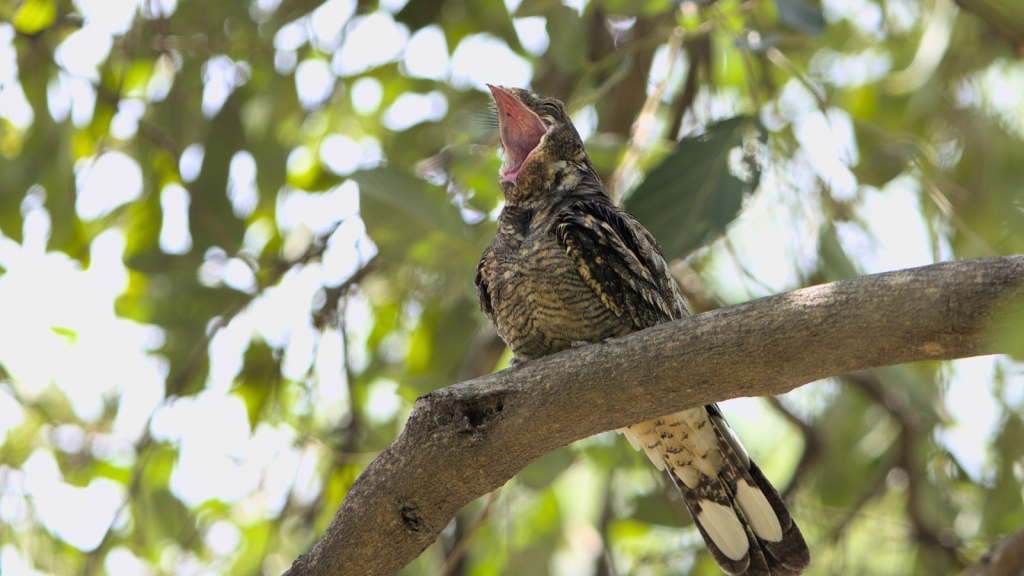
Nightjars have tiny beaks but enormous mouths. When open, their gape extends behind their eyes, allowing them to catch moths and other flying insects with ease. They even have bristles around their mouths to help funnel prey into their gullets. This specialised mouth structure enables them to scoop up insects mid-flight, much like a whale filtering plankton from the ocean.
Silent Night Flyers
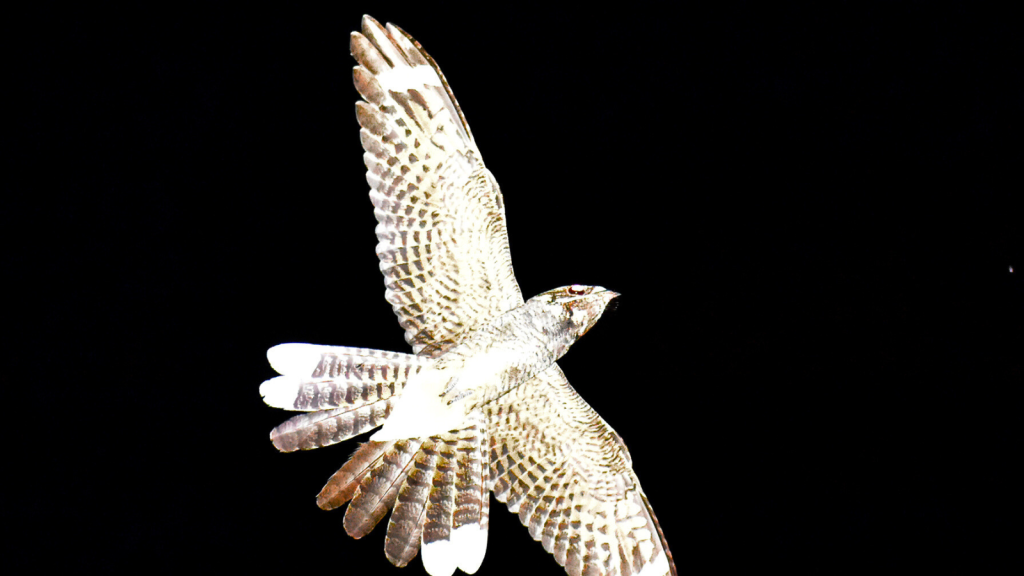
These birds are incredibly quiet in flight. Special adaptations on their wing feathers muffle the sound of air passing over them, allowing nightjars to sneak up on their insect prey without detection. This silent flight is also crucial for avoiding predators like owls, which might otherwise hear them moving through the night air.
Lazy Nest Builders
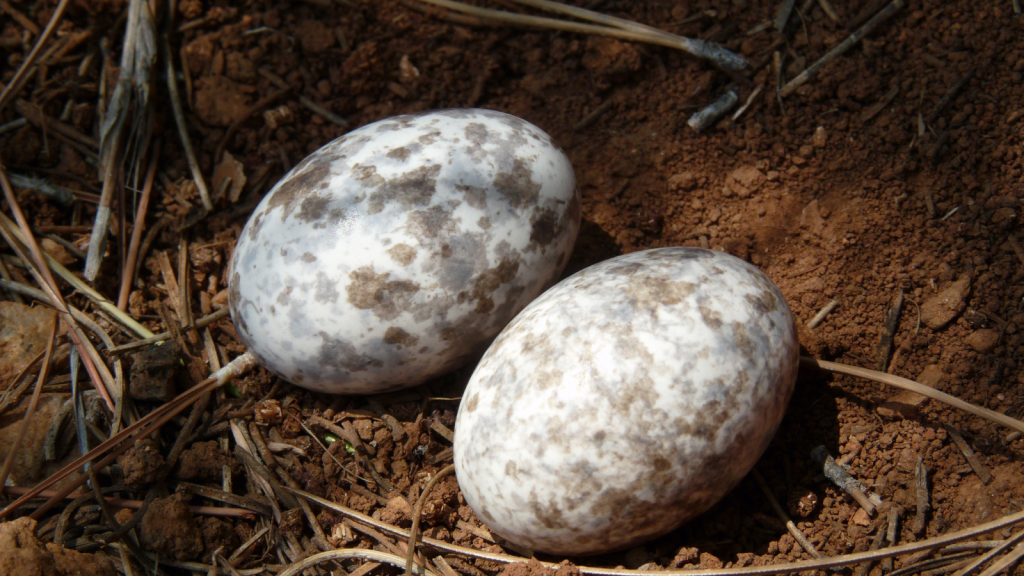
Nightjars don’t bother with elaborate nests. Instead, they lay their eggs directly on the ground, often in a slight depression among leaves or pine needles. The female’s camouflage is so perfect that she can incubate her eggs practically in plain sight. This minimalist approach to nesting allows nightjars to quickly relocate if disturbed, enhancing their chances of successful breeding.
Dusk and Dawn Dancers
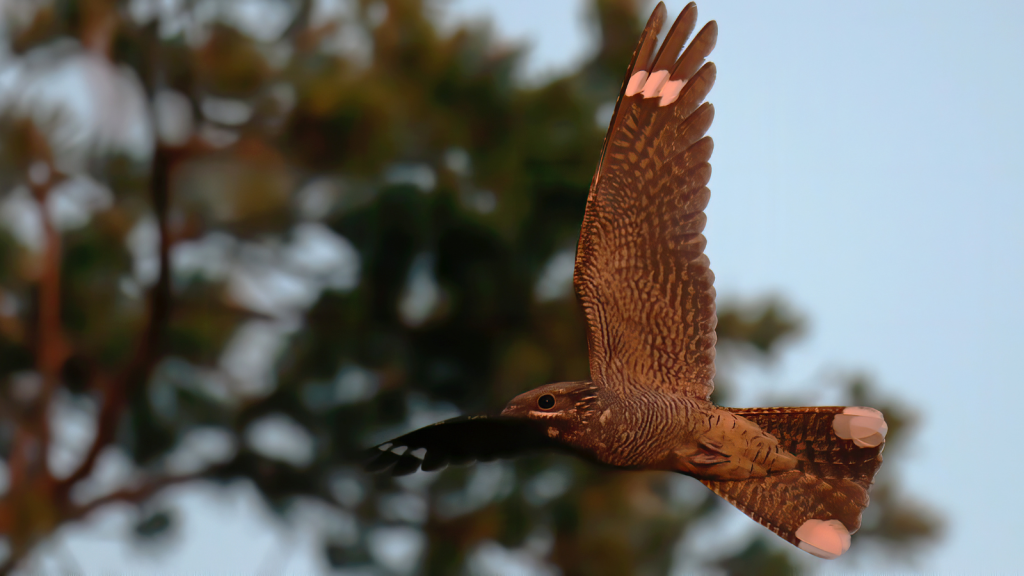
At twilight, male nightjars perform elaborate courtship displays. They circle high in the air, making loud wing-claps and diving dramatically. These aerial shows are a sight to behold for lucky observers. The wing-clapping sound is produced by the male slapping his wings together above his back, creating a sharp, distinctive noise that can be heard from a considerable distance.
Moon-Eyed Marvels
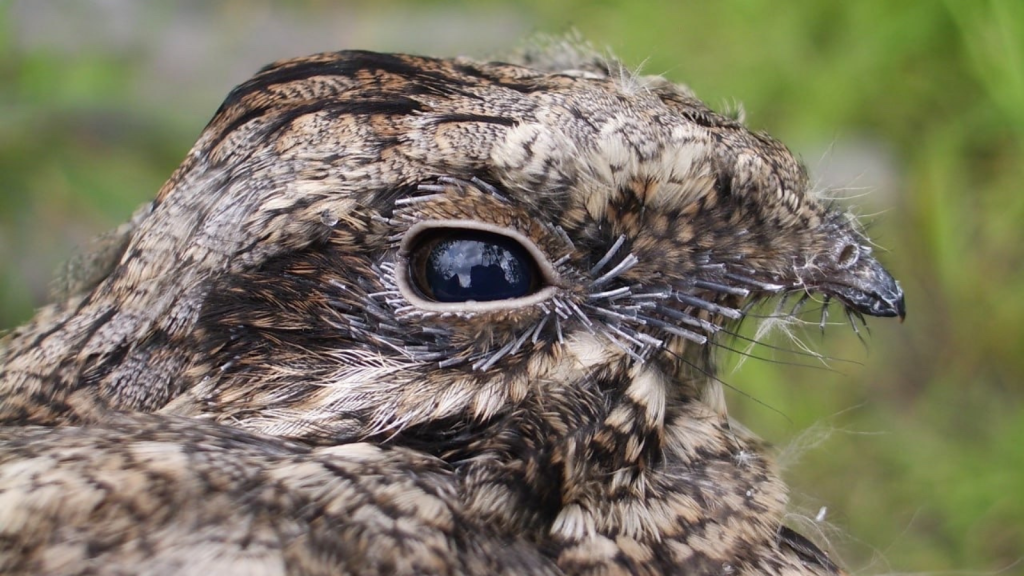
Nightjars have enormous eyes that help them see in low light conditions. These eyes reflect light like a cat’s, giving them an otherworldly appearance when caught in a torch beam. Their large eyes are fixed in their sockets, so nightjars compensate by being able to rotate their heads through an impressive 180 degrees.
Insect Vacuum Cleaners
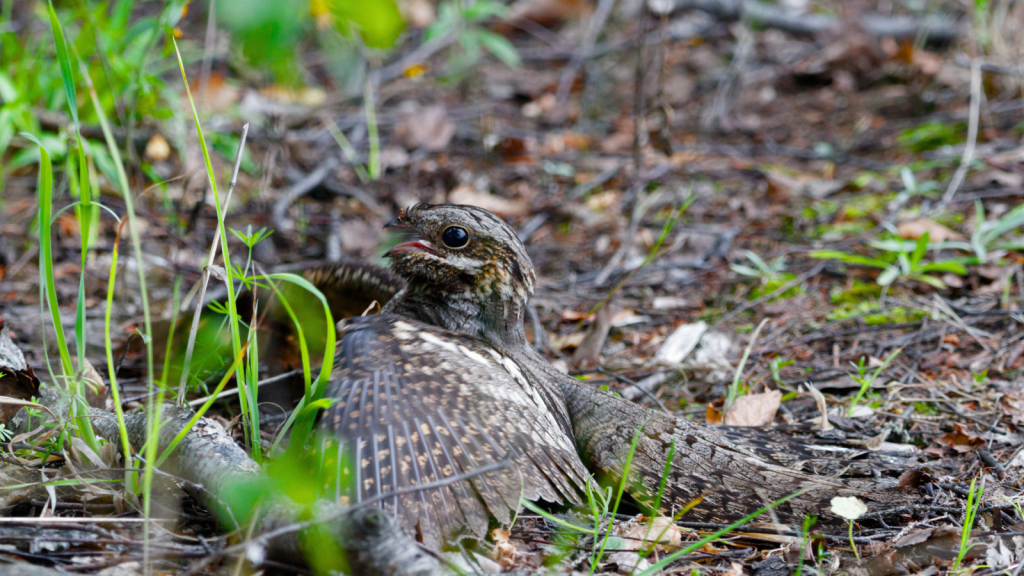
A single nightjar can eat up to 60 moths in one night. They’re particularly fond of large moths like hawk-moths, helping to keep these potential pest species under control. Their ability to consume such large quantities of insects makes them valuable allies in maintaining the ecological balance of woodland ecosystems.
Long-Distance Travellers

Our British nightjars are impressive migrants. They spend their winters in sub-Saharan Africa, making a round trip of up to 14,000 kilometres each year. Recent tracking studies have shown that some individuals can cover over 500 kilometres in a single night during migration, showcasing their remarkable endurance.
Woodland Edge Specialists
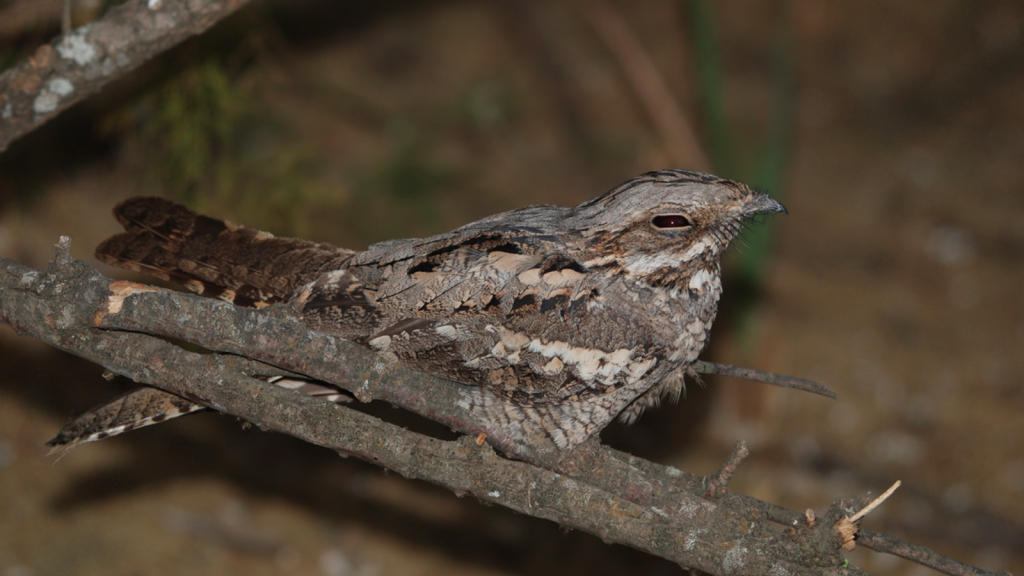
Contrary to their name, nightjars prefer open areas within or near woodlands. They thrive in habitats like heathland, clear-felled forestry, and woodland glades. This preference for edge habitats makes them particularly vulnerable to changes in land management practices, as they require a mosaic of different habitat types.
Ancient Myths and Legends
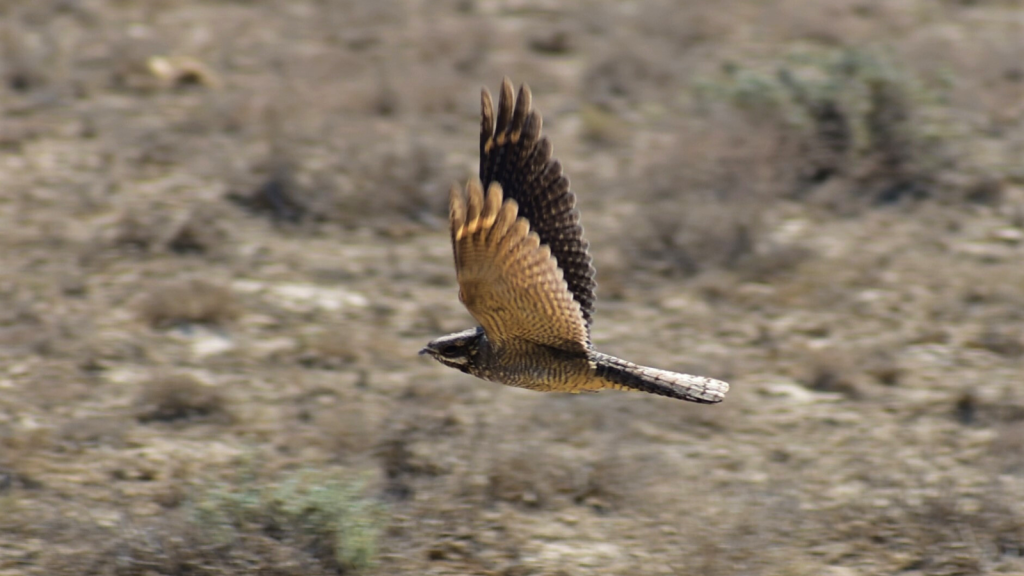
Nightjars have long been surrounded by superstition. In the past, they were wrongly accused of stealing milk from goats, earning them the unflattering name “goatsucker” in some areas. This myth likely arose from the birds’ habit of flying low over livestock at dusk, where they were actually catching insects attracted to the animals.
Clever Egg-Movers
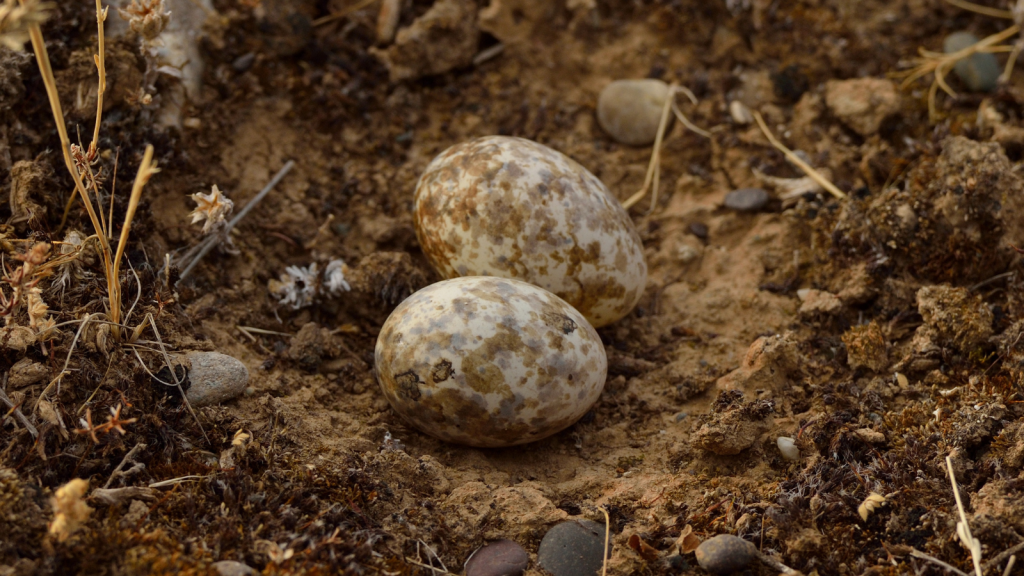
If disturbed, a female nightjar can pick up her eggs in her bill and move them to a safer location. This unusual behaviour helps protect their vulnerable ground nests from predators. They’ve been observed moving their eggs up to several metres away, always choosing a spot with similar camouflage potential.
Heat-Beating Nappers
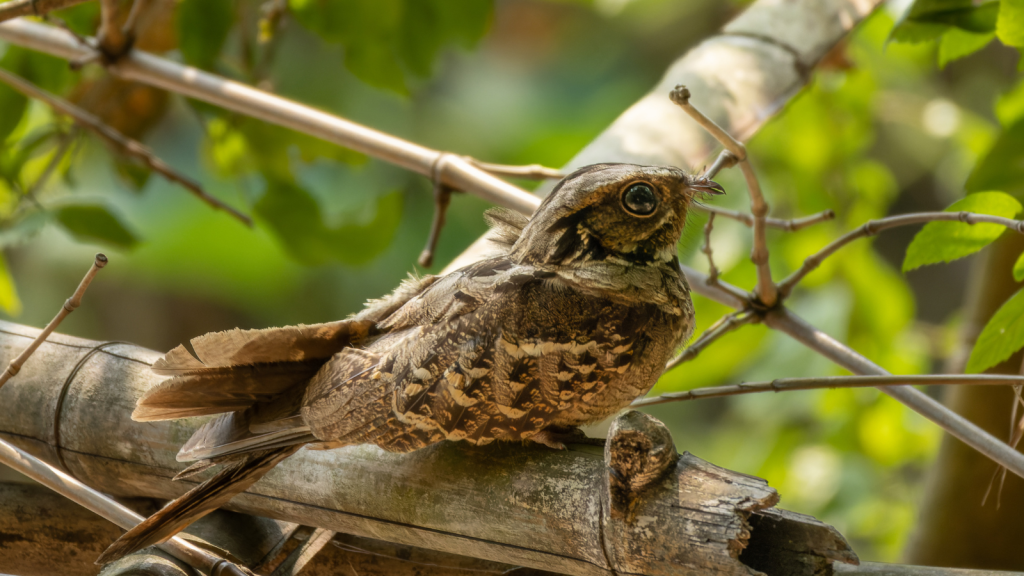
During hot days, nightjars enter a state of torpor, lowering their body temperature and slowing their metabolism. This helps them conserve energy until their active hunting time at dusk. In this state, their body temperature can drop by up to 10°C, significantly reducing their energy requirements.
Feathered Moth Mimics

The nightjar’s plumage isn’t just good for camouflage. When threatened, they can puff up their feathers and sway, mimicking a moth’s appearance to confuse predators. This bizarre behaviour, known as “threat posturing,” can be so convincing that it sometimes fools even experienced birdwatchers.
Unexpected Pollinators
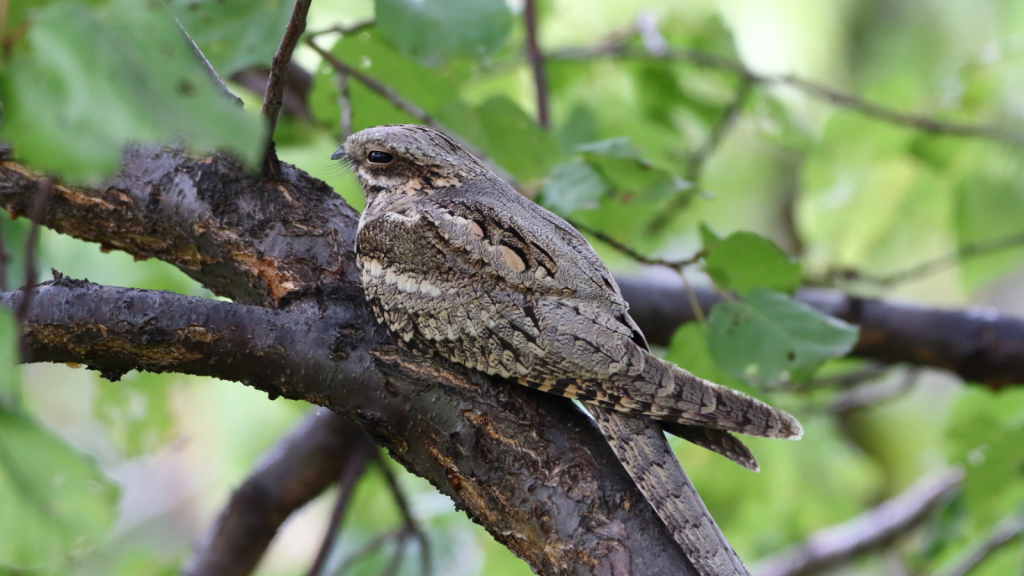
While primarily insectivores, nightjars occasionally sip nectar from flowers. In doing so, they can transfer pollen, making them unexpected but important pollinators for some night-blooming plants. This behaviour has been observed more frequently in tropical nightjar species, but there’s evidence that our British nightjars may occasionally engage in it too.
Living Pest Control
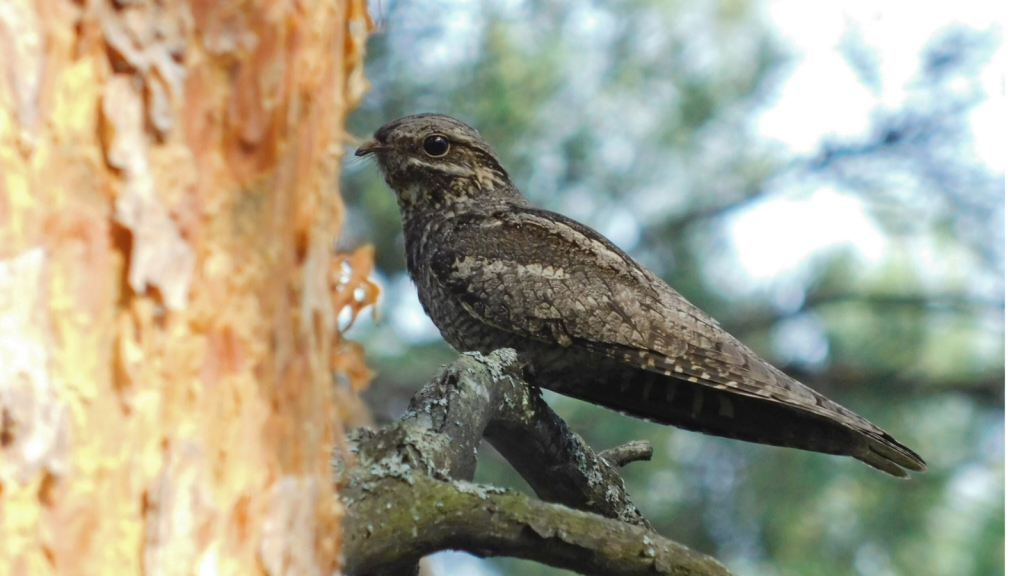
Nightjars are natural pest controllers, feeding on insects that can damage crops and trees. A healthy nightjar population can significantly reduce the need for chemical pesticides in nearby farmland. Their diet includes many agricultural pests like chafer beetles and crane flies, making them valuable allies for farmers and foresters alike.
Threatened by Light Pollution
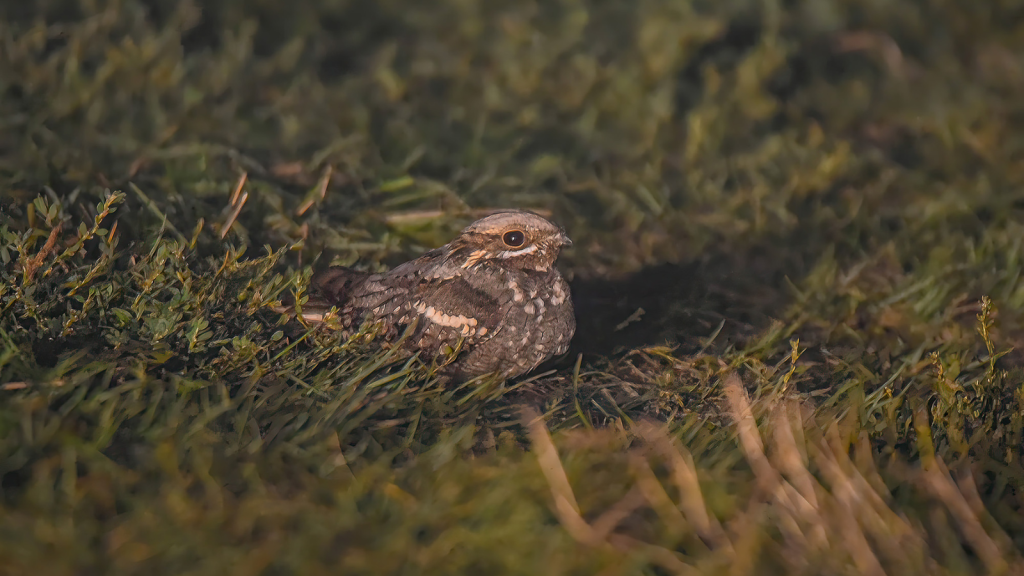
Increasing light pollution in rural areas is a growing threat to nightjars. Artificial lighting can disrupt their feeding patterns and make them more vulnerable to predators. Conservation efforts now include “dark sky reserves” in some areas, which aim to preserve natural darkness and protect nocturnal wildlife like nightjars.
Becky is a fervent wildlife enthusiast and pet care expert with a diploma in canine nutrition. Her love for animals stretches beyond the domestic, embracing the wild tapestry of global fauna. With over a decade of experience in animal welfare, Becky lends her expertise to OutlandishOwl through insightful articles, captivating wildlife information, and invaluable guidance on pet nutrition. Her work embodies a deep commitment to understanding the intricate lives of animals and a passion for educating others on sustaining natural habitats. Becky's hands-on conservation efforts and her knack for translating complex dietary science into practical pet feeding tips make her an indispensable voice for creatures great and small.

